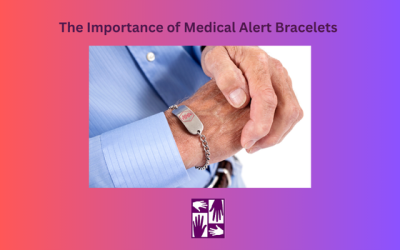October 12, 2020

Nearly three-quarters of all strokes occur in seniors; that is, people over the age of 65. A stroke is a sudden interruption in the blood supply of the brain. Most strokes are caused by an abrupt blockage of arteries leading to the brain (ischemic stroke). Other strokes are caused by bleeding into brain tissue when a blood vessel bursts (hemorrhagic stroke). When the symptoms of a stroke last only a short time (less than an hour), this is called a transient ischemic attack (TIA) or mini-stroke. Regardless of duration and type, many people who have a stroke require rehabilitation and home care, no matter your age. Seniors and younger people alike often benefit from having a caregiver or care agency to assist them, at least temporarily. Others may need care at home permanently. There are many services for seniors available after someone has had a stroke.
The effects of a stroke depend on which part of the brain is injured, and how severely it is injured. Strokes may cause sudden weakness, loss of sensation, or difficulty with speaking, seeing, or walking. Home care and rehab are usually recommended. Since different parts of the brain control different areas and functions, it is usually the area immediately surrounding the stroke that is affected. Sometimes people with stroke have a headache, but stroke can also be completely painless. It is very important to recognize the warning signs of stroke and to get immediate medical attention if they occur. After a stroke, in home care and other care services can be very helpful to the client and family.
Memorize the warning signs of a stroke. The acronym FAST can help.
F: Face drooping. Can the person smile? Is the smile uneven?
A: Arm weakness. Is one arm weak or numb? If the person raises both arms, does one drift down?
S: Speech difficulty. Is the person’s speech slurred? Can they repeat simple sentences you give them?
T: Time to call 911. If the person shows any symptoms, even if the symptoms go away, call 911. Check the time so you know when the symptoms began.
Here are seven ways to start reining in your risks today to avoid stroke. Remember, a stroke can happen at any age, but is much more likely to occur in seniors. Taking better care of your health can help you to avoid needing home care services, since it lowers your risk for stroke.
Lower blood pressure: High blood pressure is a huge factor, doubling or even quadrupling your stroke risk if it is not controlled. High blood pressure is the biggest contributor to the risk of stroke in both men and women, even if they are not a senior.
Lose weight: Obesity, as well as the complications linked to it (including high blood pressure and diabetes), raises your odds of having a stroke. If you’re overweight, losing as little as 10 pounds can have a real impact on your stroke risk.
Exercise more: Exercise contributes to losing weight and lowering blood pressure, but it also stands on its own as an independent stroke reducer. Consult your healthcare provider before you begin any exercise program, especially if you are a senior. Many cities have recreation departments with services for seniors that can help people to slowly start an exercise program.
If you drink — do it in moderation: Drinking a little alcohol is okay, and it may decrease your risk of stroke. Studies show that if you have about one drink per day, your risk may be lower. Once you start drinking more than two drinks per day, your risk goes up very sharply.
Treat atrial fibrillation: Atrial fibrillation is a form of irregular heartbeat that causes clots to form in the heart. Those clots can then travel to the brain, producing a stroke. Atrial fibrillation carries almost a fivefold risk of stroke.
Treat diabetes: Having high blood sugar damages blood vessels over time, making clots more likely to form inside them. Hiring a caregiver to help keep you on track could make a big difference.
Quit smoking: Smoking accelerates clot formation in a couple of different ways. It thickens your blood, and it increases the amount of plaque buildup in the arteries. Along with a healthy diet and regular exercise, smoking cessation is one of the most powerful lifestyle changes that will help you reduce your stroke risk significantly.
on is one of the most powerful lifestyle changes that will help you reduce your stroke risk significantly.
F: Face drooping. Can the person smile? Is the smile uneven?
A: Arm weakness. Is one arm weak or numb? If the person raises both arms, does one drift down?
S: Speech difficulty. Is the person’s speech slurred? Can they repeat simple sentences you give them?
T: Time to call 911. If the person shows any symptoms, even if the symptoms go away, call 911. Check the time so you know when the symptoms began.
Related Articles
How to Speak to Elderly Parents About Accepting Support
Strategies and tactics on how adult children can foster open and productive dialogues with seniors, helping navigate the delicate balance between independence and necessary support.
Healing Paws – Enhancing Senior’s Lives Through the Bond with Dogs
In this blog, we dive into the profound impact dogs have on seniors lives both physically and emotionally. Learn about the benefits and how to secure a new furry friend for an elderly person.
Medical Alert Awareness Month
This month we want to bring attention to the importance of medical alert bracelets, how to find them and who should be waring one.




